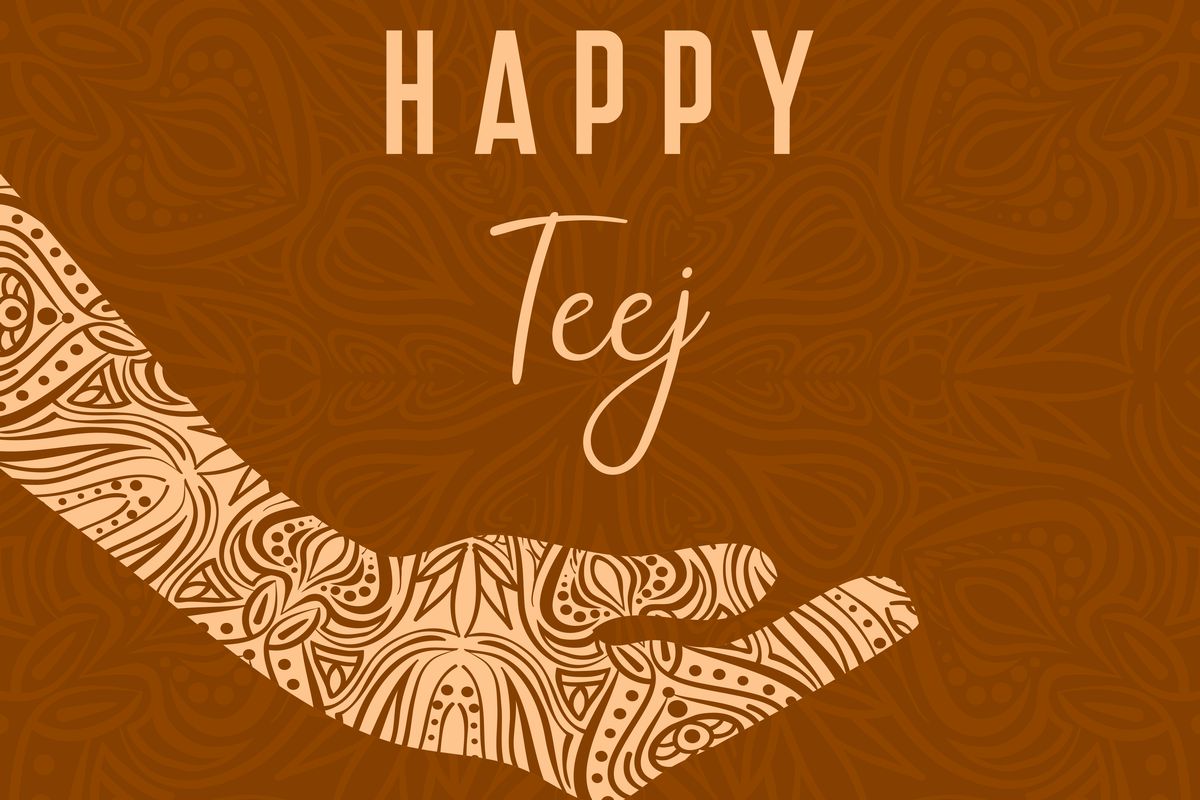Along with the monsoon, there comes the Teej festival. The festival celebrates the union of Lord Shiva and Goddess Parvati. It commemorates the day when Lord Shiva accepted the love of Goddess Parvati for him.
Teej is mainly celebrated by married Hindu women in Northern and Western parts of India to pray for the well-being of their husbands. As the name suggests, the festival refers to the third day after the new moon during the month of Shravan in Hindu calendar.
Advertisement
A few attractions of Teej festival.
Fasting and prayers: This festival is a symbol of dedication of Goddess Parvati for Lord Shiva. Even today women commemorate this mythological event by keeping a ‘Nirjala’ fast for their husbands’ well-being and long life. Prayers are performed with a desire of strengthening the bond between the couples. In Hindu mythology, it is believed that Goddess Parvati took 108 births on Earth before Lord Shiva accepted her as his wife and on this day they both were united. So it is believed, whosoever prays to the deities on this day will be blessed with a happy married life. The holy custom of fasting is a tribute to the penance that Goddess Durga had to go through for 108 years before Lord Shiva accepted her as his wife. Married ladies neither take food nor drink water for the entire day. In the evening, the women gather to hear the narration of ‘Teej Katha’ and pray to god for a blissful married life. Offerings are made to Goddess Parvati. Her image is placed on a patta. Pujan is done by sprinkling water and offering roli, rice and flowers. Only when the moon appears in the sky, these women complete their fast and have scrumptious feast.
Sindhara: Sindhara comprises of gifts and sweets which are sent to the daughter-in-law by her mother-in-law as shagun. Mehndi, bangles, sari, jewellery, cosmetics etc. form integral part of sindhara. A day prior to Teej, married women go to their mother’s house. On the day of Teej, mother-in-laws send sindhara for their daughter-in-laws in the morning. The daughter-in-laws wear all those things sent by their mother-in-laws as an auspicious ritual. When daughter-in-laws return back to their in-laws’ house in the evening to perform puja rituals, her mother sends gifts, sweet boxes, fruit baskets and many more things along with her.
Dressing up: The grandeur of Teej festival is reflected by the finery adorned by married women. On this day, women dress up like newlyweds in colours like, bright pink, red and green and try to look their best to lure their husbands. They wear solah shringar, heavy jewellery, new clothes with zari and gota and colourful glass bangles which signify the importance of the bond between couples. A lot of women go so far to adorn as many pieces of jewellery as they own. The dresses worn at the celebration include saree, lehnga and salwar-kameez. Heavily embroidered and designer attires are becoming increasingly popular. To go with their dresses, women also wear matching dress accessories, such as footwear, purses etc. These accessories add to the magnificence of the attire.
Mehndi: There is one thing that married women love to adorn their hands with – mehndi/henna. Mehndi has a deep rooted cultural significance as a festive tradition. It represents the bond of matrimony and is also considered a shagun. It signifies the love and affection between the couples. The darkness of mehndi colour on hands represents the deep love between husband and wife and it also shows the love and understanding between the daughter-in-law and her mother-in-law.
Swings: Apart from all other rituals, the tradition of swings fastened to tree branches is also associated to the festival. To sit and swing on beautifully decorated swings hung from the trees in gardens and outside homes is a customary practice for married women. One cannot imagine this colourful festival without Teej swings.
Ghevar: Ghevar is a Rajasthani sweet associated with Teej festival. The sweet is light and spongy and it is one of the richest Indian sweets as it is made from deep-fried refined flour batter discs in pure desi ghee. Then these discs are soaked in sugar syrup until the syrup penetrates through. Mothers of married women send ghevar boxes to their in-laws house as a custom on Teej. During the time of Teej, a number of confectionary and sweet shops across the country are crowded with customers wanting to buy ghevar for this festivity. Malai and mawa ghevar are the most popular varieties.
Hariyali Teej is also known as Shravan Teej. It is not just a festival, it is an opportunity to forget all worries. The festival is the best opportunity to make merry and refresh yourself with the monsoon break. Just live it!
Happy Teej!











